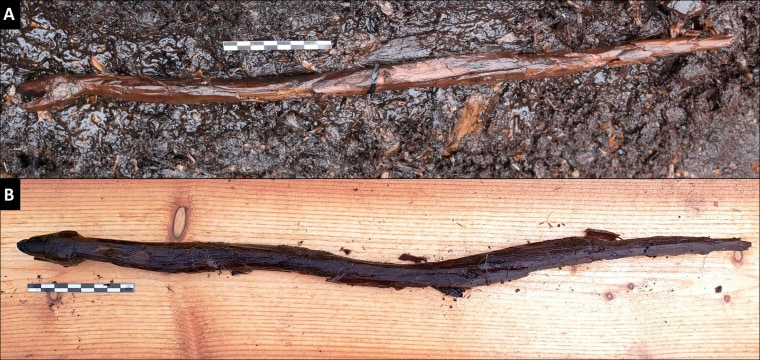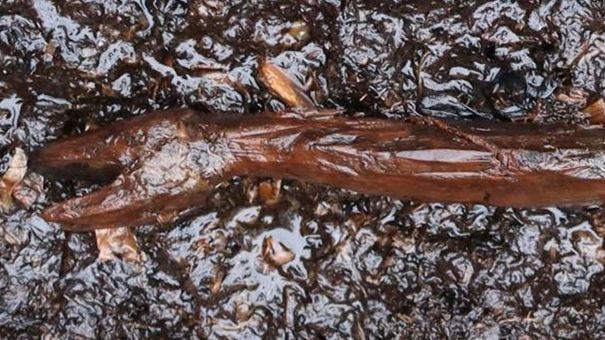Discovery of the Shaman’s Staff
The wetlands of southwest Finland have yielded a significant archaeological find—a 4,400-year-old wooden staff carved in the likeness of a snake. First noted during the 1950s when workers encountered the site known as Järvensuo 1, it wasn’t until recent efforts that the area was fully excavated. Lead researcher Satu Koivisto from the University of Turku describes the staff as an “exceptionally well-preserved example of Neolithic zoomorphic artistry.” Koivisto suggests that the staff was either misplaced, abandoned, or deliberately placed within the dense lakeside flora.

Characteristics of the Artifact
The artifact, a life-sized wooden staff carved from a single wood piece, exhibits an open mouth and straightforward design intended to represent a snake, likely a grass snake or European adder. Its simplicity and form are crucial for its assumed role in spiritual or religious rituals. Preserved remarkably well due to the low oxygen and high moisture levels of the wetland, the staff has avoided the typical decomposition associated with organic materials.

Cultural and Spiritual Significance
In Neolithic Northern Europe, snakes were integral to spiritual and ritualistic life, a theme also reflected in regional Neolithic rock art depicting snakes alongside human figures, possibly in ceremonial settings. Antti Lahelma, a co-author from the University of Helsinki, highlights that snakes were considered spirit-helper animals in shamanistic traditions. The staff is believed to have been used in religious ceremonies, perhaps even in rituals connecting with the afterlife, given the ancient Finnish belief that wetlands were gateways to the “Land of the Dead.” The transformation of shamans into snakes is another link to the mystical significance attributed to the staff.

Threats to the Archaeological Heritage
The discovery underscores not only the cultural richness of the Järvensuo site but also the urgent need to protect such environments. Koivisto points out that climate change and drainage are major threats to these wetlands, endangering the fragile organic remains they contain. She warns that the ongoing global climate crisis severely endangers these irreplaceable cultural resources, advocating for immediate measures to protect these artifacts from being irretrievably lost.

Conclusion
The excavation of the ancient shaman’s snake staff from the Finnish wetland offers invaluable insights into Neolithic spiritual practices and artistic expression. As we continue to uncover these ancient relics, it becomes increasingly crucial to recognize and mitigate the threats from environmental changes. Safeguarding these sites is both an archaeological and cultural imperative, essential for allowing future generations to discover and value our collective human past.




